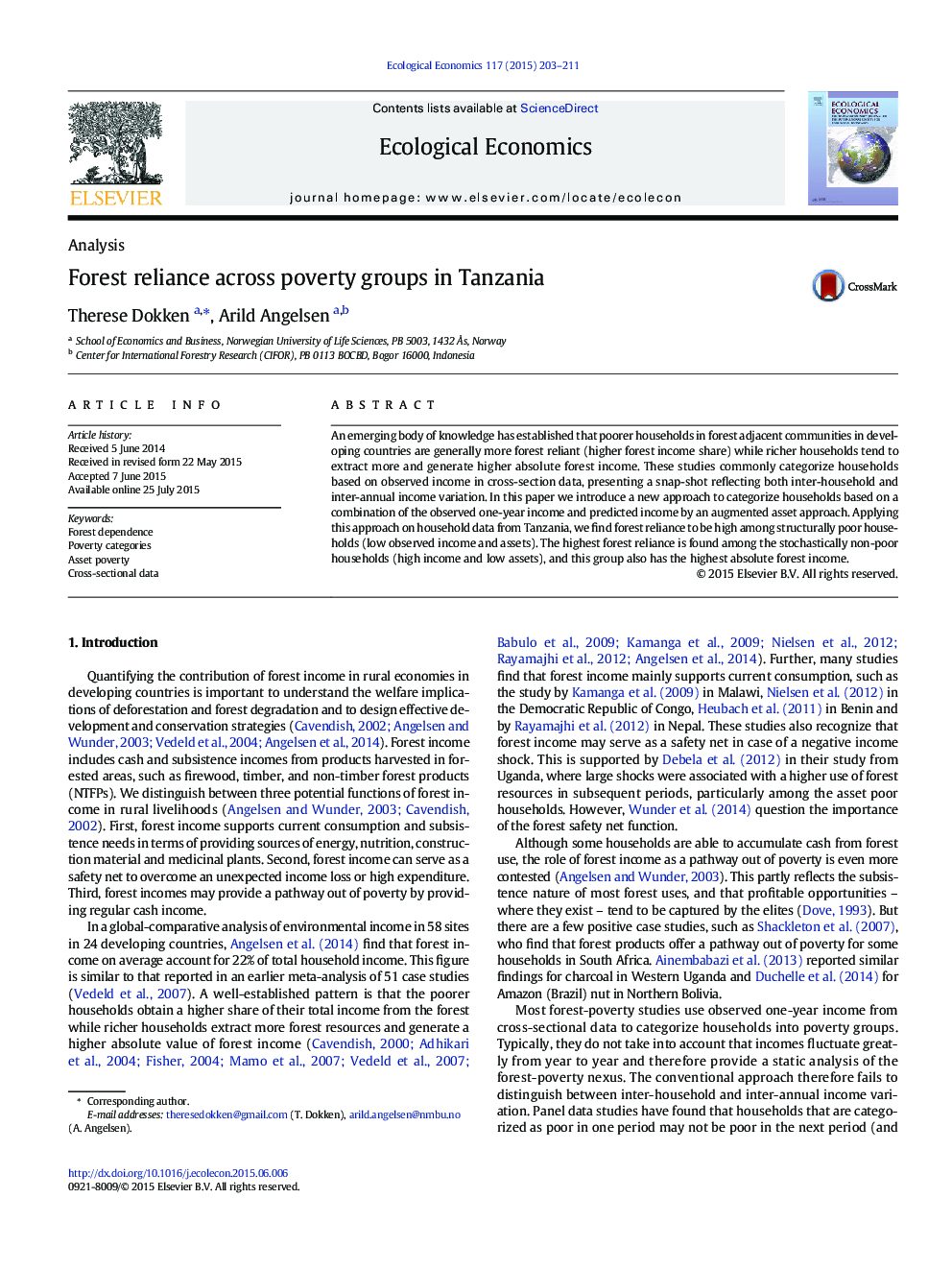| کد مقاله | کد نشریه | سال انتشار | مقاله انگلیسی | نسخه تمام متن |
|---|---|---|---|---|
| 5049290 | 1476362 | 2015 | 9 صفحه PDF | دانلود رایگان |
- Stochastically non-poor (high income, low asset) has the highest forest reliance.
- Stochastically non-poor also has the highest absolute forest income.
- Structurally non-poor (high income, high asset) do not use more forest products.
- Using predicted income yields new insights to the poverty and forest reliance nexus.
- The new method to classify households should complement conventional classifications.
An emerging body of knowledge has established that poorer households in forest adjacent communities in developing countries are generally more forest reliant (higher forest income share) while richer households tend to extract more and generate higher absolute forest income. These studies commonly categorize households based on observed income in cross-section data, presenting a snap-shot reflecting both inter-household and inter-annual income variation. In this paper we introduce a new approach to categorize households based on a combination of the observed one-year income and predicted income by an augmented asset approach. Applying this approach on household data from Tanzania, we find forest reliance to be high among structurally poor households (low observed income and assets). The highest forest reliance is found among the stochastically non-poor households (high income and low assets), and this group also has the highest absolute forest income.
Journal: Ecological Economics - Volume 117, September 2015, Pages 203-211
